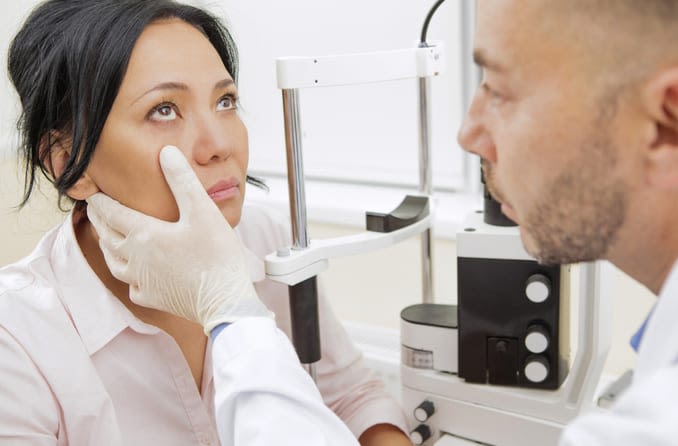Find a Trusted Optometrist Chino for Household Eye Treatment Solutions
Find a Trusted Optometrist Chino for Household Eye Treatment Solutions
Blog Article
Discovering the current Technical Innovations in Optometry and What They Mean for Eye Doctors
From the accuracy of Optical Comprehensibility Tomography to the nuanced understandings used by AI-driven diagnostic tools, these advancements are setting new standards in patient evaluation and treatment. As these improvements penetrate the technique, eye doctors are encountered with the challenge of accepting these devices to improve client results.
Advancements in Diagnostic Equipment
Progressing the area of optometry, developments in analysis devices have actually revolutionized the means eye care specialists analyze and identify eye problems and aesthetic impairments. The past years has actually observed substantial technical advancements, making it possible for more precise and thorough examinations.
An additional trick technology is the intro of innovative corneal topography systems, which map the surface area curvature of the cornea with accuracy. These tools are especially advantageous for fitting get in touch with lenses and diagnosing corneal conditions. Electronic retinal imaging has actually changed traditional ophthalmoscopy, providing in-depth, breathtaking views of the retina that facilitate complete aesthetic exams.
The growth of wavefront aberrometry has likewise been crucial, allowing the evaluation of refractive errors with unmatched precision (Eye Doctor Optometrist). This modern technology aids in tailoring restorative lenses and improving surgical end results for refractive surgical procedures. Jointly, these analysis innovations empower optometrists to deliver premium client treatment, making certain very early treatment and customized treatment strategies, ultimately improving visual health outcomes
AI in Person Administration
Building on the foundation of advanced analysis tools, the consolidation of expert system (AI) in patient administration represents a transformative leap for optometry. AI systems are increasingly used to enhance effectiveness, precision, and customization in person care. By evaluating substantial quantities of information, AI can recognize patterns and predict potential ocular problems, enabling optometrists to customize interventions more effectively. This capacity is essential in taking care of persistent eye illness such as glaucoma and diabetic retinopathy, where very early discovery and continual monitoring are key.
Furthermore, AI-driven platforms assist in streamlined person interactions and management processes. Automated organizing, virtual appointments, and personalized follow-up strategies not only boost person contentment but also maximize time administration for professionals. These systems can triage people based on the urgency of their problems, making certain that those in critical need obtain timely attention.
Moreover, AI boosts decision-making by providing optometrists with evidence-based suggestions and therapy pathways. By integrating data from digital health documents, AI devices supply insights that educate medical decisions, reducing the danger of mistakes and boosting patient results. As AI remains to advance, its function in individual monitoring will likely expand, reshaping the landscape of optometric treatment.
Advances in Retinal Imaging
In the world of optometry, retinal imaging has actually seen amazing technological advancements that are boosting analysis capabilities and individual care. Developments such as Optical Coherence Tomography (OCT) and fundus photography have changed exactly how optometrists imagine and analyze the retina.
Improved imaging methods like OCT angiography are further refining diagnostic accuracy. This non-invasive method maps blood flow in the retina, offering essential understandings right into vascular wellness without the requirement for color shots. In addition, flexible optics technology is being incorporated into retinal imaging systems to remedy eye aberrations, supplying unmatched photo clarity. Such developments promote the recognition of min retinal adjustments that could represent condition development.
Furthermore, improvements in fabricated intelligence are increasing retinal imaging by enabling automatic evaluation of big datasets. These systems assist optometrists in identifying patterns indicative of pathology, consequently enhancing diagnostic accuracy and performance. Jointly, these advancements are transforming retinal imaging into a cornerstone of contemporary eye treatment, boosting her latest blog outcomes and expanding therapeutic possibilities.
Teleoptometry's Expanding Function
Teleoptometry is increasingly coming to be a vital part of eye care, driven by innovations in electronic interaction and diagnostic tools. As optometry accepts digital makeover, teleoptometry helps with remote consultations, permitting eye doctors to prolong their services past standard limits. This is specifically beneficial in rural and underserved areas where accessibility to specialized eye treatment is frequently limited. By leveraging high-resolution video clip conferencing and advanced retinal imaging, eye doctors can carry out thorough eye exams from afar, making certain prompt medical diagnosis and therapy.
The integration of expert system (AI) additional boosts teleoptometry, enabling the evaluation of visual data and aiding in the discovery of ocular conditions such as glaucoma and diabetic person retinopathy. AI-powered algorithms can quickly interpret complex imaging data, providing eye doctors with beneficial insights that reinforce clinical decision-making.
Additionally, teleoptometry supports continuity of treatment through seamless integration with digital health records (EHRs), enabling optometrists to keep detailed client backgrounds. This ensures that people obtain consistent and customized treatment also when seeking advice from various professionals.
Despite these advantages, challenges continue to be, including making sure information security and managing client redirected here assumptions. Teleoptometry stands for a substantial stride in the direction of even more obtainable, reliable, and patient-centered eye treatment. As technology evolves, its role is poised to expand even more.

Future Fads in Eye Care
A myriad of innovative patterns is readied to improve the future of eye treatment, driven by technological developments and the evolving demands of clients. One significant fad is the assimilation of fabricated knowledge (AI) in diagnostics, which promises to boost the precision and effectiveness of eye exams. AI algorithms can evaluate vast amounts of information from retinal images, possibly detecting conditions like diabetic person retinopathy and glaucoma earlier than conventional techniques.
Furthermore, customized medicine is gaining traction in optometry, with hereditary testing informing tailored therapy strategies. This method intends to enhance individual results by tailoring treatments to individual genetic accounts. Wearable innovation, such as smart contact lenses, is additionally imminent, using real-time monitoring of intraocular stress or glucose degrees, therefore providing constant insights into article ocular and systemic health.
The fostering of enhanced truth (AR) and virtual truth (VIRTUAL REALITY) in training and person education and learning is another arising trend. These innovations provide immersive experiences that can enhance understanding and abilities both for patients and eye doctors. As these trends progress, eye doctors should stay abreast of technical developments to supply cutting-edge treatment, ensuring enhanced person outcomes and contentment in the vibrant landscape of eye treatment.
Verdict

Collectively, these analysis developments empower optometrists to supply remarkable client care, making certain very early intervention and customized treatment strategies, inevitably enhancing visual wellness results.

As these modern technologies proceed to develop, eye doctors must adapt and integrate them right into practice, eventually maximizing operations efficiency and raising the criterion of eye treatment delivered to clients.
Report this page